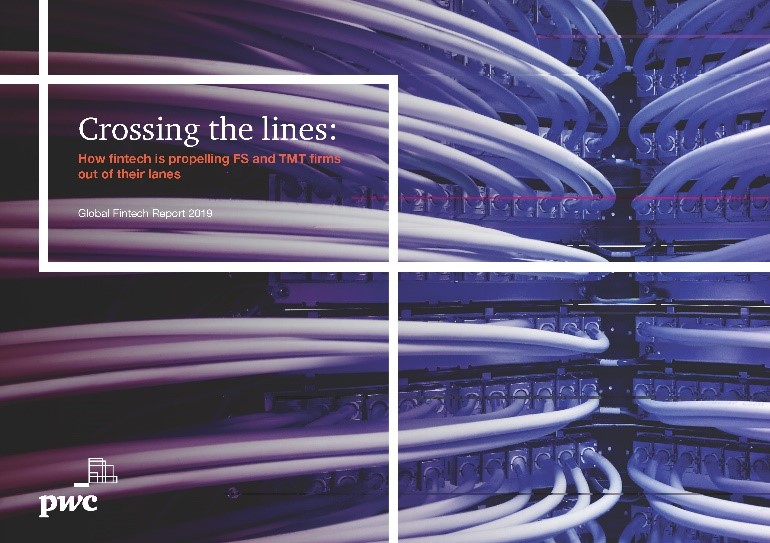
This is a publication about developments in Philippine taxation. The contents usually include latest Republic Acts, Bureau of Internal Revenue issuances, Customs regulations, Court decisions, BSP circulars, SEC circulars, Department of Justice opinions and Executive Orders relevant to Tax practice.
Talk to us
For further discussion on the contents of this issue of the Client Advisory Letter, please contact any of our partners.
Request for copies of text
You may ask for the full text of the Client Advisory Letter by writing our Tax Department, Isla Lipana & Co., 29th Floor, Philamlife Tower, 8767 Paseo de Roxas, 1226 Makati City, Philippines. T: +63 (2) 8845 2728. F: +63 (2) 8845 2806.

How financial services and technology firms are navigating the current fintech landscape
- Adopting a fintech-centred strategy is paramount
- FS should look to TMT for ideas about how best to use fintech
- FS and TMT should look to each other and retrain to fill skills gaps
- Firms should push cross-sector fusion further
PwC’s 2019 Global Fintech Survey polled over 500 financial services (FS) and technology, media and telecommunications (TMT) executives worldwide to figure out the factors that will determine the winners and losers in the race to develop and profit from fintech-driven business models.
FS and TMT industries are using fintech (financial technology) to sharpen operational efficiency, lower costs, improve customer experience, and heighten the appeal of their products and services. They’re also carving out new commercial possibilities. Digital-only banks are offering redesigned client propositions and cost profiles. Investment managers are deploying fully customised robo-advice. Insurers are using sensors to monitor people’s health and drive illness prevention. And according to a recent PwC survey, consumers are ready for the digital shake-up. The question is no longer whether fintech will transform FS, but which firms will apply it best and emerge as leaders.
Key findings and insights
Adopting a fintech-centred strategy is paramount – The survey found that 47% of TMT and 48% of FS organisations have embedded fintech fully into their strategic operating model. Also, 44% of TMT and 37% of FS organisations have incorporated emerging technologies into the products and services they sell.
“The really big changes have to be top-down. They have to be strategic. They have to be something that leadership, the board, and the executives are closely involved in and have decided the organisation needs to pursue,” said John Garvey, Global Financial Services Leader, PwC.
FS should look to TMT for ideas about how best to use fintech – FS executives surveyed think that using fintech to improve the ease and speed of their service will be key to retaining customers. But people expect ease and speed, so firms that focus their fintech efforts on these attributes might only meet customers’ expectations and not differentiate themselves, especially when competing with digitally sharp-intuitive TMT businesses.
FS and TMT should look to each other and retrain to fill skills gaps – Our survey showed that 80% of TMT and 75% of FS organisations are creating jobs related to fintech. Yet 42% of both TMT and FS organisations are struggling to fill these roles. While 73% of FS organisations are hiring from the technology sector, only 52% of TMT firms are looking to recruit from FS. Finding ways to attract people from TMT to FS, and vice versa, will be important to future success because each sector needs the other’s expertise. Upskilling will also be important.
Firms should push cross-sector fusion further – Among organisations that are planning to pursue an acquisition, strategic alliance or joint venture to drive growth via fintech, 78% of TMT and 76% of FS firms are targeting businesses within their own sectors. Less than half (44% of TMT and 47% of FS organisations) are targeting a company specialising in fintech. At a time when FS firms are striving to sharpen their technology capabilities and TMT needs product and regulatory expertise to compete in the FS market, firms will miss opportunities if they don’t pursue more cross-sector cross-over.
“In China, convergence is gathering pace. At the top of the market, we’ve even seen regulators seeking to match up the big four TMT firms with the big four banks and get them to work together — you could call it an arranged marriage. The TMT firm provides the tech-enablement and the FS firm delivers the end product,” said Wilson Chow, TMT Global Leader, PwC.
The current landscape
Emerging technologies have given companies a low-cost way of creating convenient, personalised, data-intuitive products and services. Fintech has also lowered the barriers to entry for firms — from established FS groups to startups or TMT entrants — and has therefore created a complex web of cooperative competition, or “coopetition,” and collision.
Winners and losers
Companies that have embraced fintech are reshaping the marketplace, and those that haven’t are being left behind. Three-quarters of the FS and TMT executives surveyed said they’re stepping up their fintech investment in the next two years. More than 90% are very or somewhat confident that fintech will deliver revenue growth over the next two years. But focus, maturity and speed to market vary.
Taxes, compliance matters, assessments, and refunds
Informal offer
When evidence not formally offered is admitted
Generally, evidence not formally offered shall not be considered by the court. However, if it was duly identified by testimony duly recorded, and was incorporated in the records of the case, it may be considered. Accordingly, the CTA admitted and considered a PEZA certification that was not formally offered before the CTA but was made part of the CTA's records when the independent CPA identified said PEZA certification in his Judicial Affidavit.
(CTA EB No. 1889, promulgated 11 October 2019)
Pending protest
When the FDDA is not considered the final decision of the CIR
On 28 March 2011, a taxpayer received an Amended Assessment Notice for amended deficiency EWT after reinvestigation, and an FDDA stating that, after reinvestigation, deficiency EWT and FWT was still due from the taxpayer. After replying to the Amended Assessment Notice and the FDDA, the CIR informed the taxpayer that the assessments in the FDDA have become final, executory and demandable because of the taxpayer’s failure to file an appeal with the CTA within thirty (30) days from receipt of the FDDA.
Subsequently, the taxpayer filed an appeal with the CTA which was dismissed for lack of jurisdiction for being filed beyond 30 days after the FDDA was received.
The Supreme Court held that the CTA had jurisdiction because the FDDA cannot be considered the final decision of CIR given that the amended deficiency EWT (in the Amended Assessment Notice), which is a component of the FDDA, was still under protest. There will be a final decision only when the CIR has denied or granted said protest.
(GR No. 210604, promulgated 3 June 2019)
Sufficient evidence
PEZA letter is like a certificate
In a claim for refund of input VAT attributable to VAT zero-rated or effectively VAT zero-rated sales, a taxpayer was required to prove, among others, that its sales were made to clients registered with the PEZA and SBMA. In this connection, the CTA ruled that the presentation of original or certified true copies of the PEZA and SBMA certificates of registration of the clients is no longer necessary if the taxpayer was able to present a letter by the PEZA Director General confirming the issuance of VAT zero-rating certifications to said clients.
(CTA EB No. 1884, promulgated 14 October 2019)
Direct certification
Proof that a foreign corporation is not doing business in the Philippines
To prove that a foreign corporation is not doing business in the Philippines, one of the documents required to be presented is the certification of incorporation or establishment issued by the pertinent government office in the foreign country.
However, Certificates of Incorporation, Certificate of Change of Name, and Certification from the Registrar of Companies for England were considered by the CTA as insufficient proof if an appropriate officer of the Philippine Embassy in England did not directly certify the relevant documents or the foreign certifying officer's authority to authenticate or legalize said documents.
(CTA Case No. 9631, promulgated 7 October 2019)
Service charge
Assessment of deficiency income taxes on service charges
Although service charges collected by hotels, restaurants and similar establishments do not constitute taxable income, the taxpayer should be able to prove that said service charges did not form part of gross income and were properly distributed to employees and management in accordance with Article 96 of the Labor Code. Otherwise, the deficiency income taxes assessed thereon will be upheld.
(CTA Case No. 9389, promulgated 15 October 2019)
Tax amnesty
Additional clarifications regarding the estate tax amnesty
In implementing the estate tax amnesty, the BIR issued the following clarifications, among others:
- If the estate involves several stages of succession and the succeeding decedents owned properties separate from those inherited from the first decedent, the Estate Tax Amnesty Return shall be individually filed with the respective RDOs having jurisdiction over each of the decedents.
- A supplemental Extra-Judicial Settlement (“EJS”) covering undeclared property is required in the availment of the estate tax amnesty.
- If the decedent has an on-going tax investigation in an RDO different from the RDO having jurisdiction over his/her last place of residence, the estate tax amnesty shall be filed with the latter RDO where the on-going investigation shall be consolidated.
- An Electronic Certificate Authorizing Investigation (eCAR) may be issued even if the decedent has an on-going tax investigation, provided, that the filer posts a bond.
- The estate tax amnesty may be availed even if the original certificate of title was lost, provided, that the filer shall submit a certified true copy of the certificate of title of the subject property issued by the Register of Deeds (“RD”)/Land Registration Authority.
- The estate tax amnesty may be availed even if the RD copy of the certificate of title was lost, provided, that the Owner’s Copy together with Certificate of Loss issued by the RD are submitted. However, only the Certificate of Availment shall be issued while the eCAR shall be issued only when the certified true copy of the reconstituted title is submitted.
- Medical expenses are treated as special items of deduction which should not affect the share of the surviving spouse.
- In case the decedent has many heirs, self-adjudication by one of the heirs is not allowed. An EJS signed by all the heirs is required.
- Generally, there is no donation in the waiver or renunciation of rights, interest and participation pursuant to the Civil Code on Succession. Since there is no donation, there is no documentary stamp tax due.
(Revenue Memorandum Circular No. 102-2019, issued 4 October 2019)
Amnesty forms
Revising the forms used in the availment of the estate tax amnesty
The BIR issued the following:
- Revised Estate Tax Amnesty Return (“ETAR”) which can be downloaded from www.bir.gov.ph;
- Revised Certificate of Availment to be issued by the RDOs; and
- Revised statement for allowable deductions from the gross estate of non-resident aliens.
It also clarified the treatment of items of deductions from the gross estate if no estate tax return was previously filed.
(Revenue Memorandum Circular No. 103-2019, issued 4 October 2019)
Latest return
Availability of the revised DST return for one-time transactions
BIR Form No. 2000-OT has been revised due to the implementation of the TRAIN Law. It is already available for download from www.bir.gov.ph. However, it is not yet available in the Electronic Bureau of Internal Revenue Forms (eBIRForms). Thus, taxpayers shall use the manual return by downloading the PDF version, printing the same and completing all applicable fields.
(Revenue Memorandum Circular No. 106-2019, issued 11 October 2019)
Clark district
Creating a new RDO for the Clark Freeport Zone
The Department of Finance created RDO No. 21C to cater exclusively to taxpayers in the Clark Freeport Zone which was previously under the jurisdiction of RDO No. 21A.
RDO 21C will have jurisdiction over the lands occupied by the Clark military reservations and its contiguous extensions, located within the territorial jurisdiction of Angeles City, municipalities of Mabalacat and Porac, Province of Pampanga, and the municipalities of Capas and Bamban, Province of Tarlac.
(Revenue Administrative Order No. 6-2019, issued 21 October 2019)
Machine accreditation
Effectivity and validity dates of Certificates of Accreditation
The BIR clarified the effectivity dates and extended the validity dates of Certificates of Accreditation issued to developers/dealers/supplier-vendors/pseudo-suppliers of Cash Register Machines, Point-of-Sale Machines and other sales machines/receipting software, and Permits to Use, as follows:
Date of Issuance |
Effectivity Date |
Valid Until |
Prior to 1 August 2020 |
1 August 2020 |
31 July 2025 |
1 August 2020 onwards |
Actual date of issuance |
Five (5) years from date of issuance |
(Revenue Memorandum Circular No. 107-2019, issued 15 October 2019)
Writing codes
Modification of ATCs for VAT monthly declarations and quarterly returns
In relation to the Monthly VAT Declaration (BIR Form No. 2550M) and the Quarterly VAT Return (BIR Form No. 2550Q), the following Alphanumeric Tax Codes (“ATCs”) have been modified:
Existing |
Modified / New |
BIR Form No. |
||
ATC |
Description |
Tax Rate |
Description |
|
VB102 |
Dealers on Securities/ Lending Investors |
12% |
Lending Investors / Dealer in Securities / Pawnshops / Pre-Need Co. |
2550M/ 2550Q |
VB105 VB108 |
Operators of Common Carriers with Respect to Transport Cargo
Land-Based (Road Freight) Aircraft |
12%
12% |
Transport Storage and Communications
Land Transport-Cargo Air Transport-Cargo |
|
VH010 |
On Community, Personal & Household Services |
12% |
Other Community Social and Personal Service Activity |
|
(Revenue Memorandum Order No. 54-2019, issued 31 October 2019
Treaty requirement
Processing and issuance of Tax Residency Certificate
The BIR issued guidelines and procedures for the processing and issuance of Tax Residency Certificates (“TRCs”) which are secured by Philippine tax residents for purposes of availing tax treaty benefits.
The guidelines and procedures provide for the following, among others:
- The International Tax Affairs Division (“ITAD”) shall receive and process all applications for TRCs. The TRCs will be signed by the Assistant Commissioner for Legal Service.
- All applicants should be registered with the BIR and have a TIN.
- TRCs shall be issued on the basis of the applicant’s tax residency in the Philippines.
- The BIR designed its own TRC, and shall no longer sign the TRC forms of foreign jurisdictions.
- ITAD will no longer accept TRC applications of resident aliens, including pensioners, and resident foreign corporations.
- Proper linkage between the assessment offices of this Bureau and ITAD shall be established.
(Revenue Memorandum Order No. 51-2019, issued 22 October 2019)















